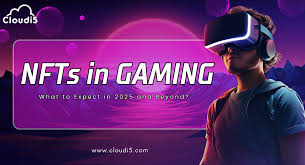After a meteoric rise in 2021 and a pronounced slump through much of 2023, Non-Fungible Tokens (NFTs) became a polarizing topic in crypto and business circles alike. Dismissed by skeptics as a passing trend and hailed by enthusiasts as the future of ownership, the key question remains for enthusiasts and investors alike: Will NFTs come back?
Recent data from Galaxy Research and other notable industry reports indicate that the NFT market is showing promising signs of recovery, but what’s driving this resurgence? And can NFTs reclaim their former glory or surpass it?
The Story of NFTs So Far
NFTs, digital assets on the blockchain representing ownership of a unique item (digital or physical), exploded in popularity during 2021, as collections like Bored Ape Yacht Club and CryptoPunks captured the imagination of creators, collectors, and brands. Their success opened doors for art, gaming, real estate, fashion, and other industries to experiment with Web3 ownership models.
However, by mid-2022 and throughout 2023, NFT trading volumes plummeted. Economic uncertainty, crypto market crashes, and skepticism around the intrinsic value of many NFT projects led to a steep decline in interest and activity. The question for many investors was whether NFTs were a short-lived craze or a long-term opportunity waiting to rebound.
Signs of an NFT Comeback
Fast forward to late 2024, and there are concrete signs that NFTs are staging a comeback. A Galaxy Research report has highlighted several positive trends in the NFT market:
- Rising Trading Volumes: Weekly trading volumes have exceeded $100 million since November 2024, with milestones like $172 million in early December. This marks the highest levels in over six months.
- Revived Marketplace Activity: Platforms such as OpenSea, Blur, and Magic Eden have seen a surge in activity. Together, OpenSea and Blur accounted for nearly 87% of all NFT trading volume in the last 30 days.
- Top Performing Collections: Some blue-chip NFT projects have regained traction, with collections like Pudgy Penguins and their associated assets seeing floor price jumps of over 200%.
Why the Market is Recovering
Several factors are driving the NFT market’s recent rebound:
- Improved Sentiment in Crypto Markets
Following the recent crypto market rally, confidence in blockchain-based assets, including NFTs, is beginning to return. Historical data suggests a strong correlation between cryptocurrency gains (e.g., Bitcoin and Ethereum) and rising NFT activity as traders diversify their assets.
- Focus on Utility Over Speculation
The narrative around NFTs is shifting from speculative assets to practical, utility-driven applications like membership tokens, gaming assets, and digital identity. Creators and entrepreneurs are exploring meaningful ways NFTs can serve real-world functions.
- Cultural Momentum
Established brands and creators continue to adopt NFTs as a way to engage with customers in unique, interactive ways. Partnerships between NFTs and global companies in the fashion, entertainment, and sports sectors are encouraging broader adoption.
- Innovative Marketplaces
Newer platforms such as Blur are incentivizing seasoned traders with features like reward mechanisms, making the NFT space more appealing to individual and institutional participants alike.
- Strong Collections Driving Renewed Interest
Collections like Pudgy Penguins have rejuvenated interest by demonstrating sustained value and community-driven projects, proving NFTs aren’t going away.
The Future of NFTs in Business
Whether NFTs return to their 2021 peak depends largely on how the industry evolves. For NFTs to regain their prominence, these critical factors must align:
1. Broader Utility and Real Applications
NFTs need to demonstrate their value outside speculative trading. Advancements in use cases like tokenized real estate, digital identities, event ticketing, and loyalty programs can redefine public perception and expand their audience.
2. Accessibility and Usability
Simpler interfaces and on-ramps for non-crypto savvy users are essential to bring mainstream adoption. Many new NFT buyers have been deterred by the technical complexities of wallets and marketplaces.
3. Enhanced Regulation and Security
Widespread acceptance of NFTs also hinges on stronger user protections and regulatory frameworks to combat scams, fraudulent collections, and intellectual property violations that have plagued the market.
4. Sustainability Initiatives
With environmental concerns surrounding blockchain usage, especially energy-intensive proof-of-work chains, initiatives to ensure sustainable minting and trading of NFTs must continue.
5. Continued Integration into the Metaverse and Gaming
The intersection of NFTs with the metaverse and gaming offers incredible opportunities. Digital assets for avatars, in-game currencies, or virtual real estate are practical applications that could fuel long-term adoption.
Will NFTs Come Back?
The early indicators suggest the NFT market is on a recovery trajectory, but its sustainability will rely on innovation, accessibility, and evolving use cases. While we can’t predict the future with certainty, the current surge in trading volumes and collection performance shows that NFTs are far from finished.
For businesses and traders exploring how to leverage NFTs, now might be the ideal time to start experimenting. Whether you’re creating branded digital assets, trading art, or developing new utilities, the NFT space still has untapped potential waiting to be explored.
Final Thoughts
NFTs may never look exactly like the 2021 boom again—but their comeback could be healthier and more sustainable this time, thanks to a maturing market focusing on utility and value. The question isn’t if NFTs will come back—but rather how they will evolve.
Are you interested in exploring NFTs for your business? Watch this space—we’ll keep you updated on the latest developments and opportunities in the NFT world!








